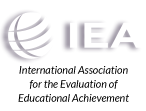TIMSS 2011 Contextual Questionnaires
There are numerous contextual factors that affect students’ learning, for example, type of school, school resources, instructional approaches, teacher characteristics, student attitudes, and home support for learning contribute heavily to student learning and achievement. For a fuller appreciation of what the TIMSS achievement results mean and how they may be used to improve students learning in mathematics and science, it is important to understand the contexts in which students learn. In every cycle, TIMSS collects a range of information about these contexts for learning by administering background questionnaires to students, teachers, school principals, and curriculum experts, which, together with assessing students’ performance in mathematics and science, provide a rich source of data on student achievement. Countries that administered the TIMSS and PIRLS 2011 fourth grade assessments to the same sample of students also administered a Home Questionnaire (Learning to Read Survey), which was completed by the students’ parents or guardians. Each of the questionnaires is described below.
Student Questionnaires
Each student in the selected class completed a Student Questionnaire. The questionnaire asked about aspects of students’ home and school lives, including basic demographic information, their home environment, school climate for learning, and self-perception and attitudes toward learning mathematics and science. In countries teaching science as separate subjects at eighth grade, students completed a version of the Student Questionnaire with questions specific to each subject (e.g., biology, chemistry, physics, and earth science).
Home Questionnaire (Learning to Read Survey)
For countries that administered the TIMSS and PIRLS 2011 fourth grade assessments to the same sample of students, the parents or guardians of each student completed the Learning to Read Survey, often referred to as the Home Questionnaire. The questionnaire asked about preparations for primary schooling, including attendance in preschool and literacy- and numeracy-centered activities in the home before the child began school, such as reading books, singing songs, or playing with number toys. Parents answered questions about home resources in addition to information about their highest level of education and employment situations.
Teacher Questionnaires
Teachers of the assessed classes responded to the Teacher Questionnaire. The questionnaire asked students’ teachers about their education, professional development, and experience in teaching. It also asked about coverage of the mathematics and science curriculum and about the instructional activities and materials used in the class of students selected for the TIMSS assessment.
School Questionnaires
The principal of each school sampled for TIMSS 2011 completed a School Questionnaire. Principals answered questions about student demographic characteristics, the availability of resources, types of programs, and environments for learning in their schools.
Curriculum Questionnaires
The TIMSS 2011 National Research Coordinator within each country was responsible for completing the Curriculum Questionnaire. Questions primarily centered on the organization and content of the curriculum in mathematics and science.
Download Questionnaires
Each of the TIMSS 2011 contextual questionnaires can be downloaded free of charge below.
The TIMSS 2011 Contextual Questionnaires are available in Portable ![]() Document Format (PDF). If needed, click here to download Adobe Reader® to read and print these materials.
Document Format (PDF). If needed, click here to download Adobe Reader® to read and print these materials.
Download all questionnaires for:
Download the questionnaires separately:
Fourth Grade
- Student Questionnaire
- Home Questionnaire (Learning to Read Survey)
- Teacher Questionnaire
- School Questionnaire
- Curriculum Questionnaire
Eighth Grade
- Student Questionnaire—General/Integrated Science Version
- Student Questionnaire—Separate Sciences Version
- Teacher Questionnaire—Mathematics
- Teacher Questionnaire—Science
- School Questionnaire
- Curriculum Questionnaire


